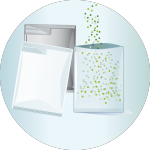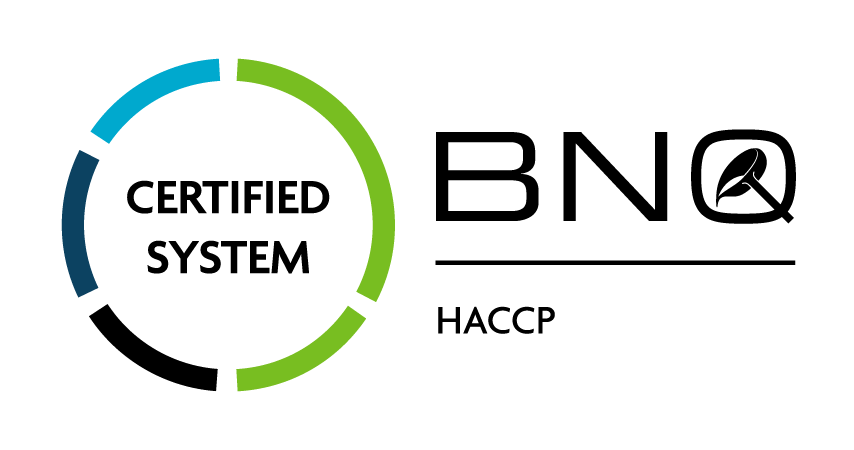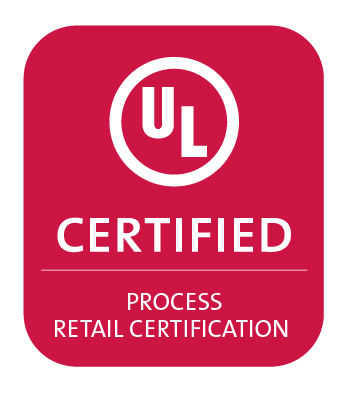 There is growing interest among consumers in verifying that the dietary supplements they take are safe and efficacious. Media outlets have questioned whether supplements truly are delivering the ingredients on the label. To maximize the potency and efficacy of dietary supplements—and to assure consumers—product developers and marketers must choose wisely not only when developing dietary supplements, but also in selecting the most appropriate packaging to ensure efficacy, prolong shelf life and get safely to market. As delicate, living organisms, probiotics represent the apex of this careful balance, as the viability and efficacy of probiotic supplements are directly tied to both conscientious handling and meticulous packaging practices.
There is growing interest among consumers in verifying that the dietary supplements they take are safe and efficacious. Media outlets have questioned whether supplements truly are delivering the ingredients on the label. To maximize the potency and efficacy of dietary supplements—and to assure consumers—product developers and marketers must choose wisely not only when developing dietary supplements, but also in selecting the most appropriate packaging to ensure efficacy, prolong shelf life and get safely to market. As delicate, living organisms, probiotics represent the apex of this careful balance, as the viability and efficacy of probiotic supplements are directly tied to both conscientious handling and meticulous packaging practices.
Over the years, numerous reports have addressed the importance of maintaining a healthy gut microbiome, and clinical studies have acknowledged the potential of probiotic yeasts and bacterium to influence and benefit human health, especially in the areas of antibiotic-associated diarrhea, irritable bowel syndrome (IBS), lactose intolerance and oral health. The functional aspect of probiotic products is rooted in balancing the proliferation of “good” and “bad” intestinal micro-biota, resulting in enhanced immune health and overall well-being. However, probiotics must be consumed in a live state in order to confer benefit.
There are many strains of beneficial probiotics that have different characteristics and benefits. Among the most popular strains are Acidophilus, Lactobacillus, Bifidobacterium, Saccharomyces boulardii and Streptococcus thermophiles. Rising levels of consumer health consciousness has spurred the probiotic product market to expand from capsules and pills into functional food and beverage products.
According to a market study from Grand View Research Inc., the global market for probiotics is expected to surpass US$52 billion by 2020. Probiotic-enhanced foods and beverages currently dominate the application market and account for more than 80 percent of the total probiotics market, driven by growth of fermented meat, dairy, bakery, breakfast cereals, fats /oils, beverages, sh and eggs, meat, and soy products. However, dietary supplements are expected to be the fastest growing application segment, bearing an estimated compound annual growth rate (CAGR) of 7.7 percent from 2012 to 2020, with probiotics for human consumption accounting for the lion’s share of the total market.
Looking ahead, the firm expects labeling regulations—especially those in the United States and the European Union—to have a significant impact on market growth. Manufacturers have become increasingly savvy about the ingredients they use to formulate these products. By using ingredients with scientific backing, probiotic manufacturers are better able to safeguard product efficacy and reduce the risk of regulatory sanctions during the manufacturing process. But what about the next go-to-market phase?
The concern over whether consumers are getting the product as it is described on the label is rooted in one vital and transformative fact: probiotics are living organisms that are highly sensitive to humidity and oxygen. In the absence of proper handling and packaging, the efficacy of probiotic products can be compromised at any point of the packaging, storage and transportation process, inversely impacting shelf life and product viability and efficacy for the consumer. Due to the concern, federal regulators are closely monitoring to determine whether probiotic products meet all label claims with appropriate substantiation and that they reflect the ingredients on the label.
Maintaining and ensuring the efficacy and sustained potency of probiotics has numerous challenges. Over the years, many packaging options have been devised, but probiotics present a unique set of challenges during the formulation, blending, packaging and transportation phases that require strict adherence to specific standards.
Paul Dupont, vice president of marketing and business development for Ropack Inc., said the process hinges upon the precepts of cold chain logistics management as it relates to temperature and humidity maintenance throughout all phases of handling, processing and packaging. Packaging with effective barrier protection is another critical component in protecting and ensuring probiotic viability.
“After probiotics are made, they are freeze-dried before being sent out for blending and packaging,” he said, adding that probiotics must be maintained at the right temperatures throughout the supply chain. “Until they’re packaged, they’re incredibly vulnerable to harm from humidity and temperature incursions.”
Regardless of whether the probiotics are arriving from North America or Europe for blending and/or packaging, Ropack maintains strict cold logistical supply chain management. Probiotics have a short, specific window of allowable excursion time (the time during which the products are unrefrigerated and have contact with air) that must be respected, otherwise the organisms will die. Upon receiving probiotic shipments, Ropack carefully monitors all unrefrigerated product excursions, documenting the complete process from beginning to end with master batch records.
Ropack’s entire manufacturing suite maintains a year-round low humidity level of 20 percent humidity or less to preserve and protect probiotic products during all excursion periods, as well as during blending and packaging processes.
Some probiotic formulas can be designed to retain efficacy via refrigeration. However, maintaining a refrigerated supply chain can present challenges, and is not always feasible for some manufacturers—but that’s not the case for Ropack. Probiotics travel and are stored in temperature-controlled areas in the -20 degree Celsius range, and are blended and packaged in production suites with average temperatures ranging from 2 to 8 degrees Celsius. Alarms are set to signal in the unlikely event of an unexpected temperature change.
Probiotics must be handled with care during the packaging process. Exposure to air at any point in the manufacturing and packaging process will affect their viability; if the manufacturing environment is not closely controlled for issues such as humidity and oxygen, degradation can and will result.
Ropack provides exact probiotic packaging processes and a controlled production environment to circumvent the potential obstacles that can affect probiotics’ potency and viability. Dupont said this attention to detail is critical. “At a certain point in the process, probiotic products will have contact with the air and that’s why we filter the air in a pharmaceutical grade packaging environment of class 100,000 clean rooms,” he said. “The air is always fresh and filtered to prevent any kind of contamination or introduction of undesirable elements that could potentially be exposed to the product.”
Probiotic dietary supplements are rendered in a variety of dosage formats. In addition to standard tablets and capsules, they are also sold in powdered formats suitable for dispersion in foods and beverages. When it comes to probiotic packaging, there are almost as many options as there are delivery formats; however, each format provides a unique set of challenges, making it necessary to ensure the beneficial bacteria are viable when consumed and that there are enough to meet label claim.
Some manufacturers opt to add surplus amounts into a product to compensate for probiotics that may not survive production, transportation, shelf life or digestion. However, this adds production costs as well as the challenge of trying to determine how effective the product will be for the end-consumer when the exact amounts of probiotics delivered are unknown.
The best option is to choose a package that most appropriately dovetails with a product’s formulation, protection and shelf-life needs. Among the most popular packaging formats for probiotics are:

Stick-packs: slim, sealed, tube-shaped format for single servings that are convenient and portable, and are easy to tear open and pour. This is a great option for probiotic powders that are either intended to be taken orally or blended into foods or beverages.

Sachets: similar to stick packs, sachets are a convenient, unit-dose packaging option that can enhances dosage compliance and ease of use.

Vials and bottles: represent airtight and leak-proof options, and typically include a desiccant sleeve for controlled moisture absorption.

Blister packaging: one of the most effective packaging options for ensuring probiotic product protection, patient compliance and the need for daily or weekly prescription dosage. Individual probiotic capsules and tablets are deposited into cold formed trays that are sealed with barrier film to protect against exposure to light and oxygen.
Selecting the most appropriate packaging format is half of the packaging equation; a consideration of equal importance is the selection of barrier protection materials to use. Barrier protection films are designed to keep delicate probiotics potent throughout the duration of their transport to retail and subsequent shelf life by preventing oxygen and moisture from permeating the package.
“If probiotics are packed in packaging that does not have a moisture barrier, the organisms will die and a company won’t be able to attain the live organism count indicated on the label,” Dupont said. “All packaging formats must have some sort of barrier protection to protect the product.”
Screw-top bottles and flip-top oval vials are ideal packaging mediums for probiotic tablets and capsules. Ropack offers bottle packaging in high density polyethylene (HDPE), polyethylene terephthalate (PET) and glass, and all three options feature inherent barrier protection. Ropack’s bottles and vials can accommodate a desiccant pouch for added moisture control, and also offer the option of refrigeration.
Stick packs and sachets are also effective probiotic packages, especially when they are formed, filled and sealed in an environment controlled for temperature, humidity and residual oxygen to protect the product from potential contaminants. Further protection is assured with the use of high-quality film (from 7 to 12 micron Poly/Alu foil barrier) to provide zero moisture vapor transmission rate (MVTR) and very low oxygen transmission rate (OTR). Ropack additionally uses leading- edge stick-pack equipment to ensure fill and seal integrity at high speeds and a high degree of fill accuracy per dose.
Cold formed blister packs rank as one of the most popular and highly robust probiotic packaging formats. Thanks to high barrier films like Alu/alu and Aclar, Ropack is able to offer excellent probiotic protection that delivers very low MVTR and OTR.
“Aluminum films offer the most superior barrier protection and Aclar® is another high barrier option,” Dupont said. “Alu/alu and cold formed blisters packaging have aluminum barrier in the film, which provides a zero percent moisture transmission rate.”
Dupont said the packaging and barrier choice ultimately boils down to the manufacturer’s quality assurance team, and Ropack can provide packaging to suit most product barrier needs, including a blister configuration with an aluminum bottom and Aclar® top.
Because blister packs are formed, filled and sealed on one machine, there is minimal exposure to external factors that could alter the integrity of the product.
Another way to assure retailers and consumers that the ingredients listed on the label are in the supplements is by adhering to strict good manufacturing practices (GMPs) that include documentation during each phase of the processing, manufacturing and packaging phases.
Ropack provides its probiotic customers with the assurances they need to guarantee peace of mind. “When we work with large global probiotic manufacturers, we will maintain their exact standards of storage, manufacturing (during the blending process) and packaging,” Dupont said. “These standards include temperature and humidity control, excursion time monitoring and barrier material testing; all of the data is recorded to match the batch record prior to release to market.”
The chain linking the transit of probiotics through manufacturing, blending, packaging and subsequent exposure at retail is fraught with potential opportunities to adversely impact the viability of the probiotic organisms. That’s why Ropack actively tests the strains at multiple points during the blending and packaging process to confirm that the strength and activity of the probiotic is where it needs to be. “Prior to sending it to us, a company will also analyze the strength of its probiotic blend,” Dupont said, “and we will additionally measure the strength of the blend prior to blending and packaging and then we’ll measure the strength prior to final product release to market. The product gets tested three times prior to market release.”
Ropack’s deep roots in pharmaceutical packaging are used to the advantage of its dietary supplement partners: the company processes and packages all it dietary supplement products in accordance with the same high quality standards as those observed in the pharmaceutical realm. “We have one quality system for all and the consistency is maintained across the board,” Dupont said.
Ropack is licensed in Canada for Natural Health Products, inspected by the FDA, and is backed by 20 years’ experience as a packaging provider for leading probiotics manufacturers.
By Joanna Cosgrove
Download the File





